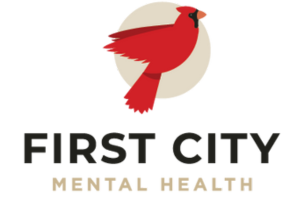Having a mental illness can make it challenging to live everyday life and maintain recovery. Let's look at some of the ways mental illness can impact lives—and how the impact can cause a ripple effect.
PERSON
- People with depression have a 40% higher risk of developing cardiovascular and metabolic diseases than the general population. People with serious mental illness are nearly twice as likely to develop these conditions.
- 32.1% of U.S. adults with mental illness also experienced a substance use disorder in 2020 (17 million individuals)
- The rate of unemployment is higher among U.S. adults who have mental illness (6.4%) compared to those who do not (5.1%)
- High school students with significant symptoms of depression are more than twice as likely to drop out compared to their peers
- Students aged 6-17 with mental, emotional or behavioral concerns are 3x more likely to repeat a grade.
FAMILY
- At least 8.4 million people in the U.S. provide care to an adult with a mental or emotional health issue
- Caregivers of adults with mental or emotional health issues spend an average of 32 hours per week providing unpaid care
COMMUNITY
- Mental illness and substance use disorders are involved in 1 out of every 8 emergency department visits by a U.S. adult (estimated 12 million visits)
- Mood disorders are the most common cause of hospitalization for all people in the U.S. under age 45 (after excluding hospitalization relating to pregnancy and birth)
- Across the U.S. economy, serious mental illness causes $193.2 billion in lost earnings each year
- 20.8% of people experiencing homelessness in the U.S. have a serious mental health condition
- 37% of adults incarcerated in the state and federal prison system have a diagnosed mental illness
- 70% of youth in the juvenile justice system have a diagnosable mental health condition.
- 8.4% of Active Component service members in the U.S. military experienced a mental health or substance use condition in 2019.
- 15.3% of U.S. Veterans experienced a mental illness in 2019 (31.3 million
people).
WORLD
- Depression and anxiety disorders cost the global economy $1 trillion in lost productivity each year
- Depression is a leading cause of disability worldwide
2020 was a year of challenges, marked by loss and the uncertainty of the COVID-19 pandemic.
We must recognize the significant impact of the pandemic on our mental health—and the importance of increasing access to timely and effective care for those who need it.
- 1 in 15 U.S adults experienced both a substance use disorder and mental illness
- 12+ million U.S adults had serious thoughts of suicide
- 1 in 5 U.S adults report that the pandemic had a significant negative impact on their mental health
- Among people aged 12 and older who drink alcohol, 15% report increased drinking
- Among people aged 12 and older who use drugs, 10% report increased use
- Among U.S. adults who received mental health services:
- 17.7 million experienced delays or cancellations in appointments
- 7.3 million experienced delays in getting prescriptions
- 4.9 million were unable to access needed care
- 26.3 million U.S adults received virtual mental health services in the past year
*All information above provided by NAMI.org

